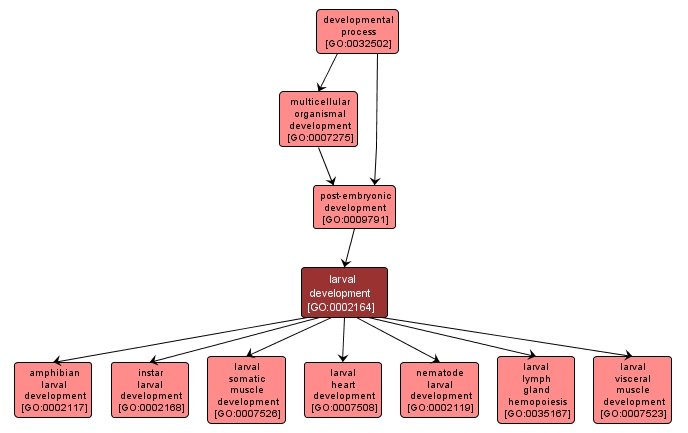| Desc: |
The process whose specific outcome is the progression of the larva over time, from its formation to the mature structure. The larva is the early, immature form of any animal when more or less of a metamorphosis takes place, before the assumption of the mature shape. |














